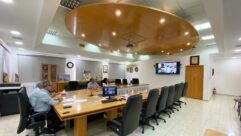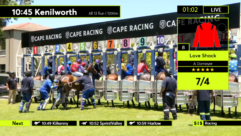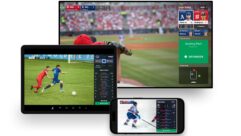
Live Streaming Over 4G
Dec 12, 2012 3:52 PM,
By Jan Ozer
Three broadcasting setups to get you started.

While many of your clients are probably already streaming live from within their facility, you may be hearing questions about streaming from away games or during services performed outside of the facility. As 4G hotspots become more available and 4G prices keep dropping, truly mobile live event streaming is becoming a practical reality. How does 4G work and what products should you consider to implement it?
Building Blocks
As an overview, you need three basic components to stream live: a live encoder, a live streaming server, and transport from encoder to server. While your clients may be able to bolt 4G communications onto their existing streaming encoders, there are several compelling reasons not to as I’ll cover below. However, in most cases, they should be able to use their existing live streaming service provider.
4G is the fourth generation of cell phone mobile communications standards, which has a theoretical peak performance of 1Gbps from a fixed location (and 100Mbps from a moving platform such as a train or car). To connect via 4G you need a 4G-compatible device (like a mobile phone) or an external 4G modem, which typically connect to notebook computers and portable encoders via USB connections.
There are two deployed 4G technologies: Mobile WiMAX and Long Term Evolution (LTE), and performance will vary by service provider and location. In a ”3G/4G Performance Map: Data Speeds for AT&T, Sprint, T-Mobile, and Verizon”, PC World tested AT&T, Sprint, T-Mobile, and Verizon 4G in 13 cities and found a significant variation in upload performance, with Sprint and T-Mobile at the low end at .97Mbps and 1.32Mbps, respectively, compared to AT&T at 4.91Mbps and Verizon at 5.86Mbps.
These are average real-world numbers, and the AT&T and Verizon results are impressive. Remember, though, that 4G connects the 4G modem to the tower. While each 4G connection is separate and unique, simultaneous 4G connections share the bandwidth to and from the tower. The more connections, the lower the bandwidth for each. Fortunately, most 4G users are downloading data, rather than uploading it, so contention for upload bandwidth should be less than contention for download bandwidth, though variable by location or even time of day.
As a caveat, while 4G is becoming more widely available, it’s far from pervasive, so you shouldn’t assume that coverage will be available at all potential broadcast locations. Fortunately, most 4G service providers have maps where you can plug in an address or zip code and check availability. You can try out Verizon’s at network4g.verizonwireless.com.
Live Streaming Over 4G
Dec 12, 2012 3:52 PM,
By Jan Ozer
Three broadcasting setups to get you started.
Implementing 4G
If your clients decide to broadcast via 4G, you can recommend one of three basic options: First, they can buy a 4G modem from a local service provider and plug it into their existing encoder, if it’s compatible with 4G. Second, they can buy a link aggregation device that combines multiple 4G modems, including those from different networks, to aggregate performance and ensure coverage. This, too, they would plug into their existing encoder, if compatible. Finally, they can buy a complete system that combines both encoding and cellular aggregation, which is the most expensive, but also the most robust option. Let’s discuss each in turn.

Teradek Bond
Link Aggregation
A single 4G modem attached to an encoder provides a single 4G connection over the selected carrier directly to the streaming service provider. Given the average connection speeds reported by PC World for AT&T and Verizon, this could work very well depending on location and other variables like time of day. However, your client is depending on a single carrier and a single connection.
In contrast, link aggregation devices, like the Teradek Bond ($2,490) can host up to five 3G or 4G modems, including modems from disparate 4G networks. When one or more modems are connected, Bond can aggregate the connection speeds into a single high-bandwidth transmission, enabling higher quality than any single connection could afford. The ability to access 4G connections from different vendors, of course, enables broader 4G coverage and provides backup if the throughput from any single vendor is limited.
Unlike 4G modems, which transmit point to point to the streaming service provider, link aggregation devices like Bond transmit to a server that assembles the disparate feeds into a single stream and can transmit that to the streaming server. For this, Teradek offers a server called “Sputnik” that your client can run on Amazon’s EC2 services or on a local Linux server.

LiveGear AirStream
Encoding/
Aggregation Solutions
The third alternative is to use a combined encoding/
aggregation solution. For example, your client could buy the Teradek Cube, which starts at $1,940, to pair with the Bond, or a combined encoder/aggregation device like the LiveGear AirStream LGT-1000 (prices start at $15,000). Slightly larger than the Teradek product, the AirStream features both a longer battery life and onboard preview, a valuable feature when livecasting remotely.
These combined encoding/transmission systems offer the expanded coverage and higher bit rate potential of link aggregation devices. In addition, since the encoder and 4G transmission unit are integrated, the system can adjust parameters like data rate and resolution as actual throughput changes, maintaining the highest possible quality at all times. In this regard, while your clients may be able to use existing encoders, if compatible, using an integrated system that can maximize quality over the duration of the event will enhance the overall experience.
Any of the three alternatives will allow your clients to greatly expand the range of live videos streamed to and fro their organizations, enhancing the experience for shut-ins and others who can’t make the trip. Still fairly exotic at this juncture, expect these capabilities to become mainstream over the next 12 to 24 months.










